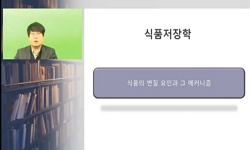Le-Fort Ⅰ Osteotomy is considered by many surgeons to be a safe and predictable method for correcting various dentofacial deformities. However, there are controversial options concerning the stability of two-jaw surgery (Le-Fort Ⅰ osteotomy and sa...
http://chineseinput.net/에서 pinyin(병음)방식으로 중국어를 변환할 수 있습니다.
변환된 중국어를 복사하여 사용하시면 됩니다.
- 中文 을 입력하시려면 zhongwen을 입력하시고 space를누르시면됩니다.
- 北京 을 입력하시려면 beijing을 입력하시고 space를 누르시면 됩니다.
하악골 전돌증 환자에서 양악 수술과 하악 단독 수술의 술 후 안정성에 관한 연구 : Jaw Surgery And Single Mandibular Surgery in Mandibular Prognathism = Stability of Two-Jaw Surgery And Single Mandibular Surgery in Mandibular Prognathism
한글로보기https://www.riss.kr/link?id=A30075004
- 저자
- 발행기관
- 학술지명
- 권호사항
-
발행연도
2002
-
작성언어
Korean
- 주제어
-
KDC
515.000
-
자료형태
학술저널
-
수록면
73-89(17쪽)
- 제공처
-
0
상세조회 -
0
다운로드
부가정보
다국어 초록 (Multilingual Abstract)
The purpose of this study was to evaluate the post-operative stability of mandible in two-jaw surgery and single mandibular surgery, to help the establishment of accurate treatment planning in patients with a skeletal class Ⅲ malocclusion.
There were 15 patients who had been undergone two-jaw surgery and 20 patients who had been undergone single mandibular surgery. Lateral cephalograms of these 2groups ; Preoperation and immediate postoperation, postoperatively 1month, postoperatively 3months, at the latest follow up(>6months) ; were analyzed by linear measurement to evaluate changes in position (hard tissue B, Pogonion point) and compare relapse both group. The results obtained were as follows ;
In view of B-point, the horizontal relapse rate of single mandibular surgery was 10.17% at post-op 1months, 12.52% at post-op 3months, 13.01% at post-op 6months and two-jaw surgery was 10.23% at post-op 1month, 11.84% at post-op 3months, 12.97% at post-op 6months. the horizontal relapse rates of Pogonion point were 10.78 at post-op 1month, 12.21% at post-op 3months, 12.98% at post-op 6months in single mandibular surgery and those were 10.27% at post-op 1month, 11.33% at post-op 3months, 12.01% at post-op 6months in two-jaw surgery.
In terms of vertical relapse rate, rates of B point were 22.96% at post-op 1month, 28.30% at post-op 3months, 29.56% at post-op 6months in single
mandibular surgery and 21.14% at post-op 1month, 25.45% at post-op 3months, 28.86% at post-op 6months in two-jaw surgery. Those of Pogonion point were 26.63% at post-op 1month, 28.40% at post-op 3months, 29.29% at post-op 6months in single mandibular surgery and 20.20% at post-op 1month, 25.44 at post-op 3months, 27.68% at post-op 6months in two-jaw surgery.
There were no statistical difference between single mandibular surgery and two-jaw surgery in mandibular stability.
Le-Fort Ⅰ Osteotomy is considered by many surgeons to be a safe and predictable method for correcting various dentofacial deformities. However, there are controversial options concerning the stability of two-jaw surgery (Le-Fort Ⅰ osteotomy and sagittal split ramus osteotomy) compared to single mandibular surgery (sagittal split ramus osteotomy).
The purpose of this study was to evaluate the post-operative stability of mandible in two-jaw surgery and single mandibular surgery, to help the establishment of accurate treatment planning in patients with a skeletal class Ⅲ malocclusion.
There were 15 patients who had been undergone two-jaw surgery and 20 patients who had been undergone single mandibular surgery. Lateral cephalograms of these 2groups ; Preoperation and immediate postoperation, postoperatively 1month, postoperatively 3months, at the latest follow up(>6months) ; were analyzed by linear measurement to evaluate changes in position (hard tissue B, Pogonion point) and compare relapse both group. The results obtained were as follows ;
In view of B-point, the horizontal relapse rate of single mandibular surgery was 10.17% at post-op 1months, 12.52% at post-op 3months, 13.01% at post-op 6months and two-jaw surgery was 10.23% at post-op 1month, 11.84% at post-op 3months, 12.97% at post-op 6months. the horizontal relapse rates of Pogonion point were 10.78 at post-op 1month, 12.21% at post-op 3months, 12.98% at post-op 6months in single mandibular surgery and those were 10.27% at post-op 1month, 11.33% at post-op 3months, 12.01% at post-op 6months in two-jaw surgery.
In terms of vertical relapse rate, rates of B point were 22.96% at post-op 1month, 28.30% at post-op 3months, 29.56% at post-op 6months in single
mandibular surgery and 21.14% at post-op 1month, 25.45% at post-op 3months, 28.86% at post-op 6months in two-jaw surgery. Those of Pogonion point were 26.63% at post-op 1month, 28.40% at post-op 3months, 29.29% at post-op 6months in single mandibular surgery and 20.20% at post-op 1month, 25.44 at post-op 3months, 27.68% at post-op 6months in two-jaw surgery.
There were no statistical difference between single mandibular surgery and two-jaw surgery in mandibular stability.
목차 (Table of Contents)
- Ⅰ. 서론
- Ⅱ. 연구 재료 및 방법
- Ⅲ. 연구 성적
- Ⅳ. 총괄 및 고찰
- Ⅴ. 결론
- Ⅰ. 서론
- Ⅱ. 연구 재료 및 방법
- Ⅲ. 연구 성적
- Ⅳ. 총괄 및 고찰
- Ⅴ. 결론
- 참고문헌
- ABSTRACT
동일학술지(권/호) 다른 논문
-
골절제술을 이용한 급속 치아이동 후 치수 및 치주조직 변화에 관한 실험적 연구
- 원광대학교 치의학연구소
- 강경화
- 2002
-
- 원광대학교 치의학연구소
- 김성훈
- 2002
-
히알루로란이 동종골 이식술시 골 형성 과정에 미치는 영향에 관한 연구
- 원광대학교 치의학연구소
- 김종구
- 2002
-
- 원광대학교 치의학연구소
- 여인식
- 2002




 KISS
KISS






